Radiant All Stars configure their dream systems
The ultimate radiant and hydronics systems as designed by our All Star pros.
By Nicole Krawcke
Dave Yates and his wife, Lois Yates, designed their 4,500 square foot dream home together after looking at hundreds of plans but not finding one they both liked. Photo courtesy of dave yates
Plumbing and mechanical contractors and engineers are hard at work every day designing and installing systems to keep their customers comfortable no matter the outdoor temperature. Having designed so many variations of systems for others, industry pros know exactly what kind of systems they would install in their own homes.
For Dave Yates, a former mechanical contractor and owner of F.W. Behler in York, Pennsylvania and Plumbing & Mechanical and PM Engineer columnist, when it came time to build his dream home in York, he knew exactly what kind of systems he wanted.
Yates’ home is a 4,500 square foot modern style home that was designed by Yates and his wife, Lois, after loking at hundreds of house plans but not finding one they both liked.
“We wanted our style because of the open floor plan with the kitchen, dining and great rooms open to each other,” Yates explains. “Lots of south-facing glass, which makes the home bright with lots of natural light. The master suite includes walk-in closets and large master bathroom. There are three additional bedrooms with one now used for our home office. We also have a daylight basement with large recreation room. There are 9-foot ceilings throughout the home except for the vaulted ceiling in the great room that peaks at 14 feet.”
The Yates home features 100% hydronic radiant heat with inverter variable-speed AC. The potable hot water system features an elevated temperature to avoid bacterial amplification and an indirect water heater. Thermostatic scald guard valves protect all points-of-use because hot water is stored and circulated at 140° F.
“The system features a high-efficiency NTI modcon boiler, 2 ECM variable speed Grundfos Alpha circulators plus a Caleffi hydraulic separator and 10 Caleffi low-watt zone valves,” Yates says. “I have an 80-gallon NTI indirect hot water tank. Ducted Fujitsu inverter mini splits with two condensers and four concealed evaporator air handlers that provide four zones of cooling and can also supply rapid recovery of heating if we go away and set back the radiant thermostats. Watts thermostatic scald-guard mixing valves are installed in close proximity to points-of-use and are set to 120° F or 110° F where our grandchildren will be using hot water. We also have a passive radon system — a Viessmann vacuum tube solar array with a 120-gallon hot water storage tank upstream of our 80-gallon indirect water heater.”
The Yates home features a large spring-fed pond in the backyard. Photo courtesy of dave yates
The Yates home also features a large pond out back with a sand beach that is spring fed, so it remains cool on hot summer days. A stream also runs through the side yard. The home includes hydronic snow-melt installed in the concrete steps and sidewalk, and tubing installed in the garage floor.
By today’s costs, Yates estimates that the all of his mechanical systems would cost roughly $168,000.
Mark Eatherton, a retired hydronic heating contractor, educator and columnist, and the former executive director of the Radiant Professionals Alliance, also lives in his dream home, located in the mountains of Colorado. The small footprint 2,000 square foot home would be designed with aging in place with everything located on the same floor.
“The home has numerous energy sources, and a control logic that prioritizes their availability based on using BEST, least expensive options before going to higher costs (environmental and monetary),” Eatherton says. “It has a propane mod con boiler, a solar thermal interface for both DHW preheat and space heating, depending on availability and need. It has a vertical borehole with a copper heat exchanger that allows me to either dump excess solar thermal and or extract it via direct exchange, or, if necessary, water to water heat pump. It will have an air source heat pump, as well as a wood-fired sawdust-powered boiler. It also has radiant (electric) windows and will eventually have a small solar PV power system. It will also eventually have a thermal battery storage system consisting of 500 gallons of water directly buried in the ground. Heat can be extracted using the water-to-water heat pump, eventually causing the whole storage tank to become a large block of ice. At that point, anything with a temperature greater than 32° F will become an energy source.”
Eatherton notes the system uses a Lochinvar mod con boiler, a modified Buderus sawdust boiler, Solaron solar thermal collectionrs, site built storage, an ANESI air-to-water heat pump and a Florida Heat Pump (water-to-water heat pump variable speed reversible).
Robert Bean's dream home is located in southern Alberta, Canada, on a hill facing a lake looking west towards the mountains. Photo courtesy of robert bean
Eatherton explains that he doesn’t have a current estimated cost for his mechanical systems as of yet. “I’ve been working on my dream system for 10 years and anticipate an additional 10 years until full completion. It also has a drain waste heat recovery system that recovers 50% of the my exiting energy stream thereby reducing my DHW cost (excluding solar contributions) by 50%.”
Robert Bean, ASHRAE Fellow, lecturer and retired engineering technology practitioner, says his dream home is located in southern Alberta, on a hill facing a lake looking West toward the mountains.
The home is single story, 1,400 square feet slab on grade with an attached garage and gym. “I prefer this style because it’s easy to design/build and keep clean and dry,” he says.
“The mechanical systems include a hybrid of dedicated ventilation using an ERV with MERV 13 filtration and radiant floors and walls, served by a heat pump with a lake loop bypass,” Bean says. “There is solar thermal and PV for domestic water heat and power.”
Bean’s home includes Uponor radiant and domestic water equipment, including its new Aquaport heat transfer station, and a Veissmann or Nordic heat pump. All the controls would be Danfoss thermostatics, and the ERV would be VanEE or FanTech. The bath and kitchen exaust would also be FanTech. “These are all reputable brands with bulletproof equipment,” Bean notes.
According to Bean, the home would also feature high performance, wood framed/cellulose/rockwool insulation enclosure with exterior insulation and loads below 10 Btu/h/ ft2. “The window to wall ratio is less than 40% of the wall with Fiberglass frames and Cardinal glass with triple pane argon filled windows with 366/180 solar coatings. The mostly side hung windows would be oriented to take advantage of predominant winds for natural ventilation and nighttime cooling. There would also be exterior shading on the South-Southwest glass. There would be Big Ass Haiku ceiling fans in bedrooms and socializing ares. The home would use Aero-barier to seal it up tight. The flooring would be wood, tiled or stained concrete, and the mechanical room would be in a conditioned shed attached to the garage.”
Bean's home includes a hybrid of dedicated ventilation using an ERV with MERV 13 filtration and radiant floors and walls, served by a heat pump with a lake loop bypass. There is also solar thermal and PV for domestic water heat and power. Photo courtesy of robert bean
Bean estimates the systems would cost roughly 12% to 15% of the construction cost, which would include some enclosure upgraded.
John Siegenthaler, consulting engineer and principal of Appropriate Designs in Holland Patent, New York, and longtime PM and PM Engineer columnist; says his dream home is located in either Northern Idaho or Western Montana.
“I would design the house. Probably single-story, with attic trusses for a partial second story, along with a walkout basement on a lot with a slight slope to the south, and good solar gain potential,” he says. “I prefer that style because of simple/fast construction, very strong, energy efficient and very little wasted interior space. I would have a design heating load no higher than 10 Btu/hr/ft2, and not require water temperature above 120° F at design load. I would invest in high performance windows and spray foam insulation, and it would feature a low-maintenance exterior.”
The mechanical systems of the home would include an air-to-water heat pump supplying individually-controlled panel radiators, and perhaps a couple small areas of floor heating, Siegenthaler notes. “A central ducted air handler with a chilled water coil would supply cooling, with heat recovery ventilation tied to the same ducting system. The same heat pump would supply domestic hot water. Photovoltaic panels on site would supply a significant portion of the electrical energy needed by this system.”
The Yates home features 9-foot ceilings throughout the home except for the vaulted ceiling in the great room that peaks at 14 feet. Photo courtesy of dave yates
Siegenthaler adds the home would feature 8 foot standard ceilings, 36-inch wide interior doors, LED recessed lighting in all rooms, a kitchen pantry and plenty of closet space. The cabinets would be Amish constructed and spray foam insulation.
“There would also be a connection for a backup generator and the mechanical room would provide good access to all equipment, but would not necessarily have to be large.”
The estimated cost for Siegenthaler’s dream system would be roughly $25,000 to $30,000, he says.
For legendary industry icon Dan Holohan, founder of HeatingHelp.com and well-known industry educator, author and columnist, his idea of a dream home is a bit different after recently downsizing. Holohan sadly lost the love of his life, The Lovely Marianne, last year. “We were married 50 years and my memories of her are my true dream house,” he says.
Now, is dream home is a fourth-floor apartment located in Bethesda, Maryland, near his daughters and grandchildren. “They feed me and fuss over me. The climate is just right. There’s a gorgeous walking trail just outside my door. Four grandkids are constantly asking me questions that I have to think about before answering. They keep me interested in everything, and that's very good at this age.”
The Yates home is 100% hydronic radiantly heated with inverter variable-speed AC. The potable hot water system features an elevated temperature to avoid bacterial amplification and an indirect water heater. Thermostatic scald guard valves to protect all points of use because hot water will be stored and circulated at 140° F. Photo courtesy of dave yates
Holohan notes there is a balcony with four rocking chairs just outside the sliding glass door. He has a view of Mulberry trees and the squirrels as they perform acrobatics. “I think they appreciate me as an audience of one. I like it because it’s carefree. I’ve been responsible enough in my life. It’s time for me to watch the birds.
The apartment’s comfort system is supplied from a heat pump locked in a heated room on the balcony with a large water heater. Holohan says he cannot get to any of it. “William and Jose, the two fellas who take care of all things mechanical in the building, stop in every few months to check things out. I've lived with and loved hydronics for most of my life. This heat-pump business is new to me and I'm spending time thinking about it. So far, so good.”
And the best part about the cost, Holohan notes, is it’s all included in the rent.
“I have no need for snow-melt — I don’t go out in the snow, and I park my car in a closed garage under the building. Old guys rule.”
They do, indeed.
ABOUT THE AUTHOR
Nicole Krawcke is chief editor for Plumbing & Mechanical.




